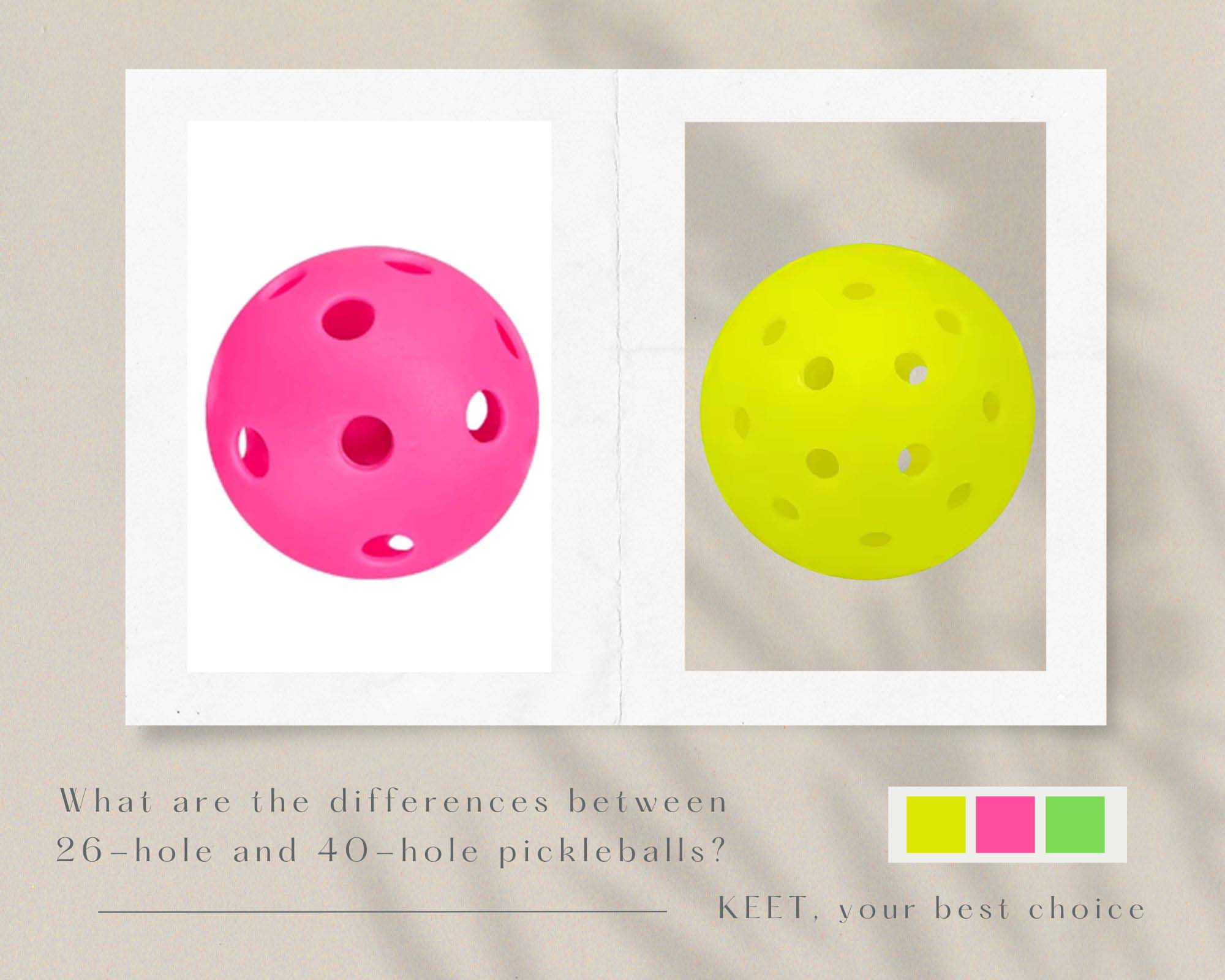What are the differences between 26-hole and 40-hole pickleballs?
Sep 28, 2025
In the sport of pickleball, which blends the essence of tennis and other ball sports, the design of the number of holes on the ball is not merely a craftsmanship difference but a sophisticated engineering feat concerning aerodynamics, material science, and scenario adaptation. From 26 holes to 40 holes, the change in the number of holes on the ball directly influences its flight trajectory, ball control feel, and durability, becoming a core parameter that players must deeply consider when selecting equipment.
I. 26-Hole Pickleballs: More Suitable for Indoor Scenarios
1. 26 Holes: Slow and Controllable Flight Trajectory
26-hole pickleball balls feature a sparse hole distribution, with each hole measuring approximately 1.1 centimeters in diameter. In a windless indoor environment, the turbulence formed when air passes through fewer holes is smaller, resulting in a relatively slower flight speed and lower rotation amplitude of the ball. The 26-hole ball can fly along a more stable parabolic trajectory, reducing the risk of going out of bounds due to rapid flight. Professional players often choose 26-hole balls when practicing techniques to precisely control the landing spot.
2. Material and Feel: A Friendly Experience with Soft and Elastic Material
26-hole pickleball balls are made of soft PE material, providing a gentle touch upon impact. This design is extremely beginner-friendly—when practicing serves or baseline drives, the soft and elastic material can reduce the psychological pressure caused by mistakes while minimizing joint impact from rebounds of hard balls. It also reduces the frequency of ball replacements, significantly lowering sports costs.
3. Durability: The "Longevity Champion" in Indoor Scenarios
Due to the absence of wind and sand as well as UV erosion in indoor venues, the soft material of 26-hole balls becomes an advantage. The subtle texture on its surface enhances friction with the paddle, reducing slippage, while the sparse hole design lowers the wear rate during ground friction. The deformation rate of 26-hole pickleball balls is lower than that of 40-hole pickleball balls, making them more suitable for daily training and light competitions.
II. 40-Hole Pickleballs: More Suitable for Outdoor Scenarios
1. 40 Holes: A Windproof Barrier with Dense Holes
40-hole pickleball balls enhance their windproof coefficient through a dense pore structure, providing higher flight stability in outdoor scenarios. On windy courts, 40-hole balls can maintain a straight flight trajectory, while 26-hole balls are prone to deviating from the target area due to crosswinds.
2. Speed and Rotation: The Competitive Edge of Hardcore Material
40-hole pickleball balls are made of hard PE material, offering stronger rebound and faster ball speed upon impact. Their hardcore material can produce more pronounced rotational effects, allowing players to create more tactical opportunities through rotational variations. Advanced players often utilize the rapid ball speed and strong rotation of 40-hole balls in outdoor competitions to execute more aggressive baseline drives and net-front volleys.
3. Durability: The "Hardcore Warrior" in Outdoor Environments
Facing the hardcore impact of concrete and asphalt surfaces, the hard structure and small hole diameter design of 40-hole balls exhibit exceptional durability. Their heavier weight enhances wind resistance penetration, while the dense holes disperse impact forces, reducing wear. The deformation rate of 40-hole pickleball balls is low, and the edges of the holes are less prone to cracking, outperforming 26-hole pickleball balls in outdoor scenarios.
Equipment selection is a profound dialogue between humans and scenarios. Beginners can start with 26-hole pickleball balls, whose controllability aids in establishing muscle memory for technical movements. As players progress to an advanced stage, the rapid ball speed and strong rotation of 40-hole pickleball balls can stimulate tactical creativity. From 26 holes to 40 holes, the change in the number of holes on pickleballs is not just an adjustment of technical parameters but a precise response to sports scenarios. The 26-hole pickleball ball, with its emphasis on "slowness," showcases the art of ball control in indoor spaces; the 40-hole pickleball ball, with its emphasis on "speed," conquers wind resistance challenges in outdoor arenas. When selecting equipment, it is necessary to comprehensively consider factors such as one's own skills and the scenario. Choosing the right pickleball ball ensures that every shot becomes a perfect resonance between technique and scenario.

 Network Supported
Network Supported